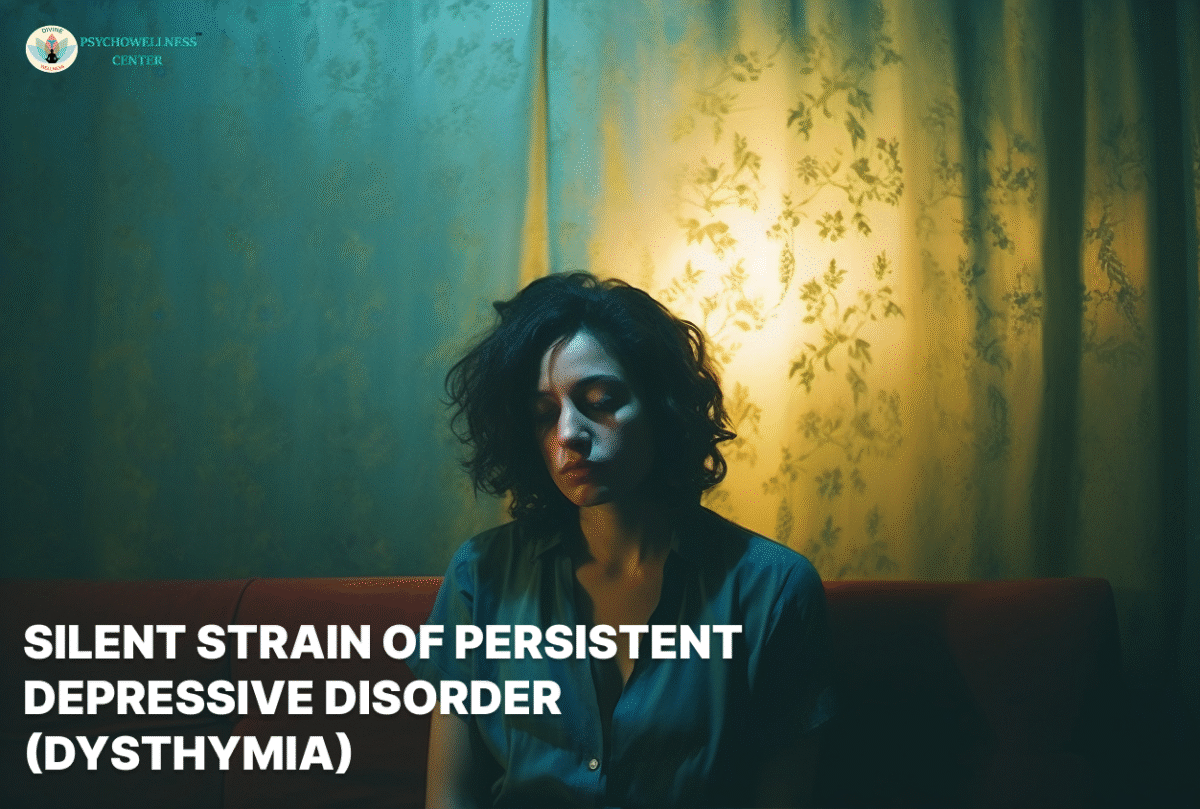Life isn’t always a series of dramatic highs and lows. It can occasionally be described as a persistent, low-level sense of sadness, or a sensation of being caught in a perpetual state of “stuff”. This isn’t just a fleeting case of the blues; it’s the quiet, chronic struggle of Persistent Depressive Disorder (PDD), also known as dysthymia. Unlike the intense episodes of major depression, PDD is a long-term mental health condition where a depressed mood, though less severe, lingers for years. It’s a silent battle fought behind a mask of normalcy, often leading to the feeling that this pervasive sadness is simply a part of who you are, rather than a treatable condition. It’s the silent strain of a life lived under a constant emotional grey sky.
Understanding the “Low-Grade” Depression
Unlike Major Depressive Disorder (MDD), which is characterised by intense, debilitating episodes of depression, PDD is a chronic form of depression. To be diagnosed with PDD, an adult must have a depressed mood on most days for at least two years. This long duration is a key differentiator. A person with MDD may experience severe symptoms for a few weeks or months and then return to a baseline mood. Someone with PDD, however, never fully shakes the feeling of being “down in the dumps.”
The symptoms of PDD may not be as severe as those of MDD, but their persistence can be just as, if not more, damaging. The constant nature of the disorder can wear down a person’s resilience, affecting their relationships, work, and overall quality of life. They might be perceived by others as gloomy, pessimistic, or unmotivated. This can lead to a cycle of social withdrawal and isolation, as they may feel a sense of hopelessness and find it hard to engage in activities they once enjoyed.
Symptoms and Signs to Watch For
Recognising the symptoms of PDD is the first step toward seeking help. It can be particularly challenging because the symptoms often become a part of a person’s normal life. According to the Diagnostic and Statistical Manual of Mental Disorders (DSM-5), a diagnosis of PDD requires a depressed mood and at least two of the following symptoms:
- Low Energy or Fatigue: Feeling drained all the time, regardless of how much sleep you get.
- Poor Appetite or Overeating: Significant changes in eating habits, either eating much less or much more than usual.
- Insomnia or Hypersomnia: Difficulty sleeping or sleeping excessively.
- Low Self-Esteem: A persistent feeling of worthlessness, self-criticism, and a negative view of oneself.
- Poor Concentration or Difficulty Making Decisions: A constant “brain fog” that makes it hard to focus, remember things, or make even simple choices.
- Feelings of Hopelessness: A deep-seated belief that things will never get better, and that the future is bleak.
The “Double Depression” Phenomenon
A person with PDD is also at a higher risk of experiencing episodes of major depression. This co-occurrence is known as “double depression.” When this happens, the chronic, low-grade depression is compounded by more severe symptoms, such as significant changes in weight, intense feelings of guilt, and suicidal thoughts. This makes treatment more complex and highlights the importance of addressing PDD before it escalates.
The Path to Healing
Living with PDD can feel like a constant battle, but it’s a fight that can be won. PDD is typically treated with a combination of psychotherapy and medication treatments.
- Psychotherapy (Talk Therapy): Cognitive Behavioural Therapy (CBT) is a highly effective treatment. It helps people identify and challenge the negative thought patterns that fuel their depression. Other forms of therapy, such as Interpersonal Therapy, can also be beneficial in addressing relationship issues that may be contributing to the chronic low mood.
- Medication: Antidepressants, particularly Selective Serotonin Reuptake Inhibitors (SSRIs), are often prescribed. It’s important to remember that finding the right medication and dosage can take time, and a person should work closely with their doctor to manage any side effects.
Self-Care and Lifestyle Adjustments
In addition to professional treatment, several self-care strategies can help manage the symptoms of PDD. These are not a replacement for professional help, but they can be powerful tools in your mental health toolkit.
- Exercise: Physical activity is a proven mood booster. Even a brisk walk can help.
- Mindfulness and Meditation: Practising mindfulness can help you become more aware of your thoughts and feelings without judgment, allowing you to break free from negative rumination.
- Social Connection: It can be hard to socialise when you’re feeling down, but connecting with friends and family can provide vital support.
- Healthy Habits: Prioritising good sleep hygiene and a balanced diet can have a significant impact on your energy levels and mood.
Conclusion
If you feel like you’ve been carrying a weight that never seems to lift, it’s important to recognise that this constant sense of heaviness is not something you need to endure alone. Persistent Depressive Disorder is a real and treatable condition, and taking that first step to seek help can be a transformative experience. Whether you’re searching for the best psychologist near me or are more comfortable with online counselling, support is easily accessible. Services like TalktoAngel offer secure, confidential therapy that is personalised to your needs. For those who prefer in-person sessions, the Psychowellness Centre—located in Janakpuri and Dwarka Sector-17—provides expert care from skilled professionals specialising in emotional resilience, trauma recovery, and overall mental health. Reach them at 011-47039812 or 7827208707 to take the first step towards reclaiming your joy and well-being.
Contribution: Dr. R.K. Suri, Clinical Psychologist, and Ms. Swati Yadav, Counselling Psychologist
References
- American Psychiatric Association. (2013). Diagnostic and Statistical Manual of Mental Disorders (5th ed.). American Psychiatric Publishing.
- Cleveland Clinic. (2024). Persistent Depressive Disorder (PDD): Symptoms & Treatment. Retrieved from https://my.clevelandclinic.org/health/diseases/9292-persistent-depressive-disorder-pdd
- National Institute of Mental Health. (2024). Persistent Depressive Disorder (Dysthymic Disorder). Retrieved from https://www.nimh.nih.gov/health/statistics/persistent-depressive-disorder-dysthymic-disorder

